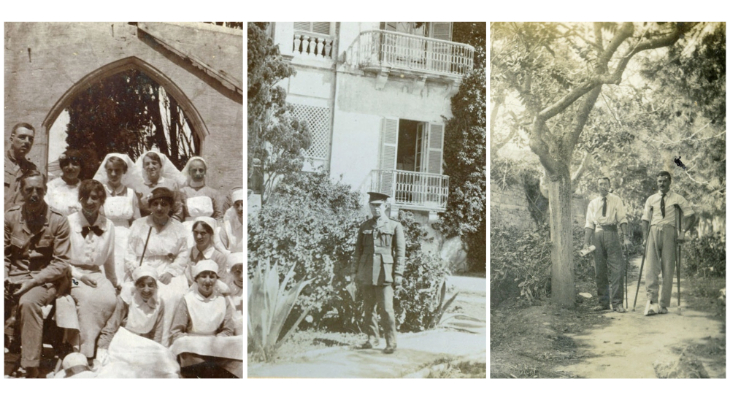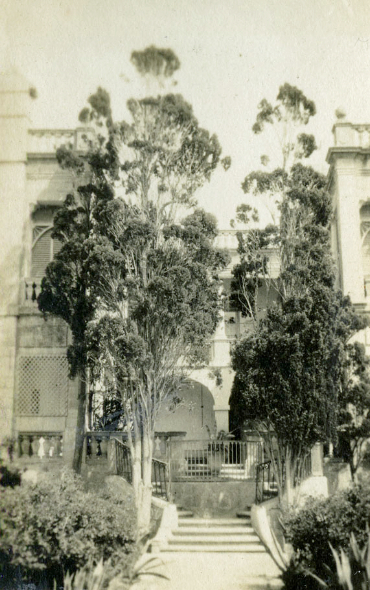The fascinating history of Villa St Ignatius: Malta's former Jesuit college under siege
Which other building in Malta has been a Protestant college, a Jesuit college, a military hospital, and a hospice for the mentally ill?
The beautiful and historically valuable St Ignatius Villa made headlines in December 2017, when shocking footage emerged of workers pulling down part of its structure without the necessary permits in hand. Since then, the villa has been at the centre of a protracted battle between developers, residents and NGOs, all with conflicting interests as to what its fate should be. But few people know the history behind the villa, and why safeguarding it has become a topmost priority for people who value Malta’s rapidly-disappearing heritage.
St Ignatius Villa is one of Malta’s earliest buildings with neo-Gothic elements. Originally called Bel-Vedere, it was once a detached country villa belonging to an English merchant named John Watson. Surrounded by gardens and fields, it was considered to be a prominent St Julian’s landmark and is mentioned in accounts of Malta dating back to 1839. According to Architect Edward Said’s 2017 Heritage Report on the villa, it was bought from Mr Watson in 1846, and turned into the Malta Protestant College. The college remained in operation for almost 20 years, and closed down in 1865.

A painting of Bel-Vedere/Villa St Ignatius
Within a short time after it closed, it was purchased by a pair of Maltese gentlemen, who saw an opportunity to further Catholic education, and invited the Society of Jesus to run a college from there. Approved by the Colonial Office in 1877, and named after the founder of the Jesuit order, St Ignatius of Loyola, it soon became a prestigious Jesuit boarding school, turning out students who would fill prominent positions in public life. However, it closed down 40 years later in July 1907, and the Jesuits soon opened St Aloysius College in Birkirkara.
After the Jesuits left, Villa St Ignatius remained vacant for eight years until it was converted into a military hospital in 1915. It was the time when Malta was busy earning its title as the Nurse of the Mediterranean, and the Villa welcomed hundreds of injured soldiers who were serving in the First World War. The Heritage Report states that besides 155 hospital beds, facilities included an operating theatre with an X-ray room. A wealth of photos of St Ignatius Hospital survive from that time, taken by Sister Alice Welford, a nurse who was stationed in Malta.

Photos of St Ignatius Hospital patients and staff taken by Sister Alice Welford/University of Tulsa Archival Catalog
Two years later, St Ignatius was adapted to take the mentally ill, some of whom were stricken by the horrors they had seen in the Great War. By this time, it was housing almost 200 men. The hospital closed down in January 1919 after the end of the conflict. St Ignatius also housed some of the Russian refugees fleeing the Bolshevik conflict – these refugees gave the nearby Exiles area its name.
From the 1920s onwards, the rest of the old college was divided into tenements and sold off for housing, and by the 1970s, nearly all of the surrounding grounds had been sold off and developed.

Sister Alice Welford/University of Tulsa Archival Catalog
But despite all the changes made to the villa over the course of nearly two centuries, the entire fabric of the old college including the villa building of Watson’s Bel-Vedere still survive intact – for now.
Unfortunately, the value and beauty of Villa St Ignatius has been routinely overlooked, and threatened by development. In December 2017, part of the villa was dismantled without a formal development application. And as of September 2018, more demolition and amendments have been proposed through applications lodged with the Planning Authority, despite pending court action over the illegal destruction of part of the building the year before.
Din L-Art Ħelwa and Sliema residents have appealed to the Planning Authority for the Balluta landmark to be scheduled and protected under threat of development, but were turned down as was the Superintendence for Cultural Heritage’s request for scheduling. Since then, the Environment and Planning Review Tribunal has granted Din l-Art Ħelwa the right to appeal the refusal for scheduling. But until then, Villa St Ignatius remains in limbo, yet another living artefact of Malta’s history which is dangerously close to being lost forever.